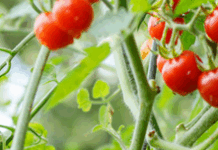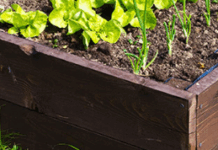1712 Claflin, 2021 Throckmorton Plant Science Center
Manhattan, KS 66506 (785) 532-6173
Download and print the Hort Newsletter
(Downloadable version)
HNR Website access: https://hnr.k-state.edu/extension/horticulture-resource-center/horticulture-newsletter/
ANNOUNCEMENTS:
The Kansas Forest Service’s Conservation Tree Planting Program offers tree and shrub seedlings, as well as other items for use in conservation plantings. Plantings may function as wildlife habitat, windbreaks, wood lots, timber plantations, or educational and riparian (streambank) plantings. Find out more and order trees by visiting: https://www.kansasforests.org/conservation_trees/
The 74th Annual Kansas Turf & Landscape Conference will be held on December 4 & 5 (Wednesday & Thursday) at the Hilton Garden Inn,
Manhattan. The conference is an excellent way to learn about turf and
landscape management, visit with old friends, network with new ones, and see all the latest products and supplies from local and national vendors.
The conference has been approved for commercial pesticide recertification hours:
1 Core hour
3A – 7 hours
3B – 7hours
GCSAA education points and International Society of Arboriculture CEUS will also be available by attending the conference. For more information, visit:
https://www.kansasturfgrassfoundation.com/
VIDEO OF THE WEEK:
Growing Garlic in Kansas
(K-State Garden Hour)
Kansas is well-suited for growing a healthy garlic crop, but there are special considerations to make including what varieties to grow.
GARDEN TO-DO
Plant Kentucky bluegrass by October 1. Tall fescue should be seeded no later than October 15.
Herbs can be dug and transplanted into pots for indoor use during the winter.
VEGETABLES
Garlic Planting Time
Kansas’ climate is suitable for growing a variety of garlic types. By planting garlic in the fall the cloves have time to go through a chilling period which is important for bulb and flower growth. October is a good time to plant because the cloves can begin to develop roots and shoots before freezing temperatures arrives.
Purchase large, mature garlic bulbs from a reputable grower rather than the grocery store. Separate the bulbs into individual cloves just before planting. The papery covering does not need to be removed. Cloves should be planted one to two inches deep and six-inches apart within five days to prevent them from drying out. Fertilize according to soil test recommendations. Water the cloves in well and apply a layer of mulch in late fall or early winter after there have been a few frosts to insulate the soil. Keep the area weed-free and remove the mulch in mid-spring so the soil will warm.
Bulbs should be ready to harvest next summer when the lower third of the foliage is yellow. Carefully dig one area to check the bulbs for maturity. The bulbs are ready for harvest when the cloves are beginning to separate.
FRUIT
Fruit Planting Preparation
If you plan to establish a fruit garden or add to your existing one, now is a good time to take advantage of the weather conditions and prepare the planting site.
Pay attention to slopes in the landscape. Cold air tends to settle in these areas and frost damage is more likely so it is best to avoid planting fruit trees and other frost sensitive plants there.
Fruit crops are perennial. Soil preparation is important since the plants will stay in that site many years. Moderate fertility and loamy texture are ideal and good drainage is essential. To improve the soil, incorporate organic matter into the top several inches. If possible, plant a cover crop the year before planting to improve the soil.
Contact your local K-State Research and Extension agents to guide you in obtaining soil samples to determine a fertilizer program. Fruit trees can be planted in the fall, but they will need to be monitored through the winter. Warm winter temperatures can promote bud development which can be detrimental to fruiting if followed by a freeze. It is also important to ensure trees are watered, as needed, through the winter. The Midwest Home Fruit Production Guide is a great resource to support your fruit growing efforts.
TURF
Animal Urine on the Lawn
Animal urine can cause damage to turfgrasses. Most commonly the problem is from domesticated animals, primarily dogs, who frequent the lawn and urinate in the same area repeatedly. The result is a non-uniform lawn with inconsistent growth and patches of deeper green or brown. In severe cases, the homeowner may need to reseed to correct the problem.
The symptoms from animal urine on turfgrass are most severe during dry periods when the soil moisture is low and the turf is poorly hydrated. To best protect your lawn from this damage, maintain turfgrass so it is vigorous and more likely to recover from damage. This includes following mowing, fertilizing and other care recommendations. If the problem is primarily caused by your own pets, you may be able to direct them to a less visible area of the lawn to take care of business. Pouring water on the grass immediately after the dog has urinated on it can help minimize damage.
MISCELLANEOUS
Bringing Amaryllis Back into Bloom
Are you growing an amaryllis bulb from last winter? Since they are sensitive to cold temperatures they need to be moved indoors before the first frost. In order to force them into bloom, amaryllis bulbs need a dormant period to store enough energy to support flowering.
Keep the amaryllis in a cool, dry, dark area. Do not water and remove leaves as they dry. Allow the bulb to rest for eight to twelve weeks. If new growth develops, move the amaryllis to a sunny window. Otherwise, wait until you are ready to encourage new plant growth. At that time, move the bulb to a warm, sunny spot and water thoroughly. Wait to water again until roots have established to avoid bulb rot. Maintain temperatures between 50- and 60-degrees F. Flowers will last longer, even up to one month, if the plant is kept in a cool location away from intense sunlight.
Yellow Jacket Wasps
Though yellowjackets can sting, they are beneficial insects. Yellowjackets feed on many varieties of soft-bodied insects such as sawfly larvae and caterpillars that an wreak havoc in the garden.
Yellow jackets are about ½ to ¾-inch long with a black and yellow striped abdomen. They are scavengers and often impose on outdoor events where sugary foods and drinks are being served. They are also commonly seen swarming trash cans and are attracted to perfume and flowers as well.
Yellow jackets are most aggressive around their nest so avoid this area. Removing food sources, including fruit dropped from trees, can reduce their presence in the landscape. Yellowjackets are typically present until the weather turns cold.
Preventing Sunscald on Thin-Barked Trees
Many young, smooth, thin-barked trees such as honeylocusts, fruit trees, ashes, oaks, maples, lindens, and willows are susceptible to sunscald and bark cracks. Sunscald normally develops on the south or southwest side of the tree during late winter. Sunny, warm winter days can heat the bark causing it to lose its cold hardiness. In one study, the southwest side of tree trunks were 40 degrees warmer than shaded bark. As a result the cells become active and susceptible to freezing when the temperature drops at night. Damaged bark tissue becomes sunken and discolored in late spring and will eventually crack and slough off. Trees often recover but need special care — especially watering during dry weather.
If you have seen this type of damage in previous years or fear you have susceptible trees, you can take preventative measures. A light-colored tree wrap from the ground to the first branches can be added in October/November to protect young and/or recently planted trees. The wrap should be removed the following March to prevent harm to the tree.
QUESTION of the WEEK
When should I cut back ornamental grasses?
I have some very large ornamental grasses in my landscape. Some of the lower blades are turning brown but most of the plant is still green. Should I cut them back now or wait until later in fall?
In general, avoid cutting back ornamental grasses while they are still green to allow them more time to store energy. As the grasses turn brown and dry, they can be cut back if desired. However, many gardeners leave them intact through the winter to provide interest to the landscape. Early spring is typically the best time to cut back and divide ornamental grasses.
Contributors:
Cynthia Domenghini, Instructor and Horticulture Extension Specialist
K-State Turfgrass
Kansas Garden Guide
Division of Horticulture
1712 Claflin, 2021 Throckmorton
Manhattan, KS 66506
(785) 532-6173
For questions or further information, contact your local extension agency.
This newsletter is also available on the World Wide Web at:
http://hnr.k-state.edu/extension/info-center/newsletters/index.html
The web version includes color images that illustrate subjects discussed. To subscribe to this newsletter electronically, send an e-mail message to cdom@ksu.edu or cdipman@ksu.edu listing your e-mail address in the message.
Brand names appearing in this newsletter are for product identification purposes only. No endorsement is intended, nor is criticism implied of similar products not mentioned.
K-State Research and Extension is committed to making its services, activities and programs accessible to all participants. If you have special requirements due to a physical, vision or hearing disability, or a dietary restriction please contact Extension Horticulture at (785) 532-6173.
Cynthia Domenghini, Ph.D.
Instructor; Horticulture Extension Specialist
Department of Horticulture and Natural Resources
Kansas State University
1712 Claflin Rd.
Manhattan, KS 66503
785-340-3013
cdom@ksu.edu
Access the HORTNEWS-L Home Page and Archives
Unsubscribe from the HORTNEWS-L List




